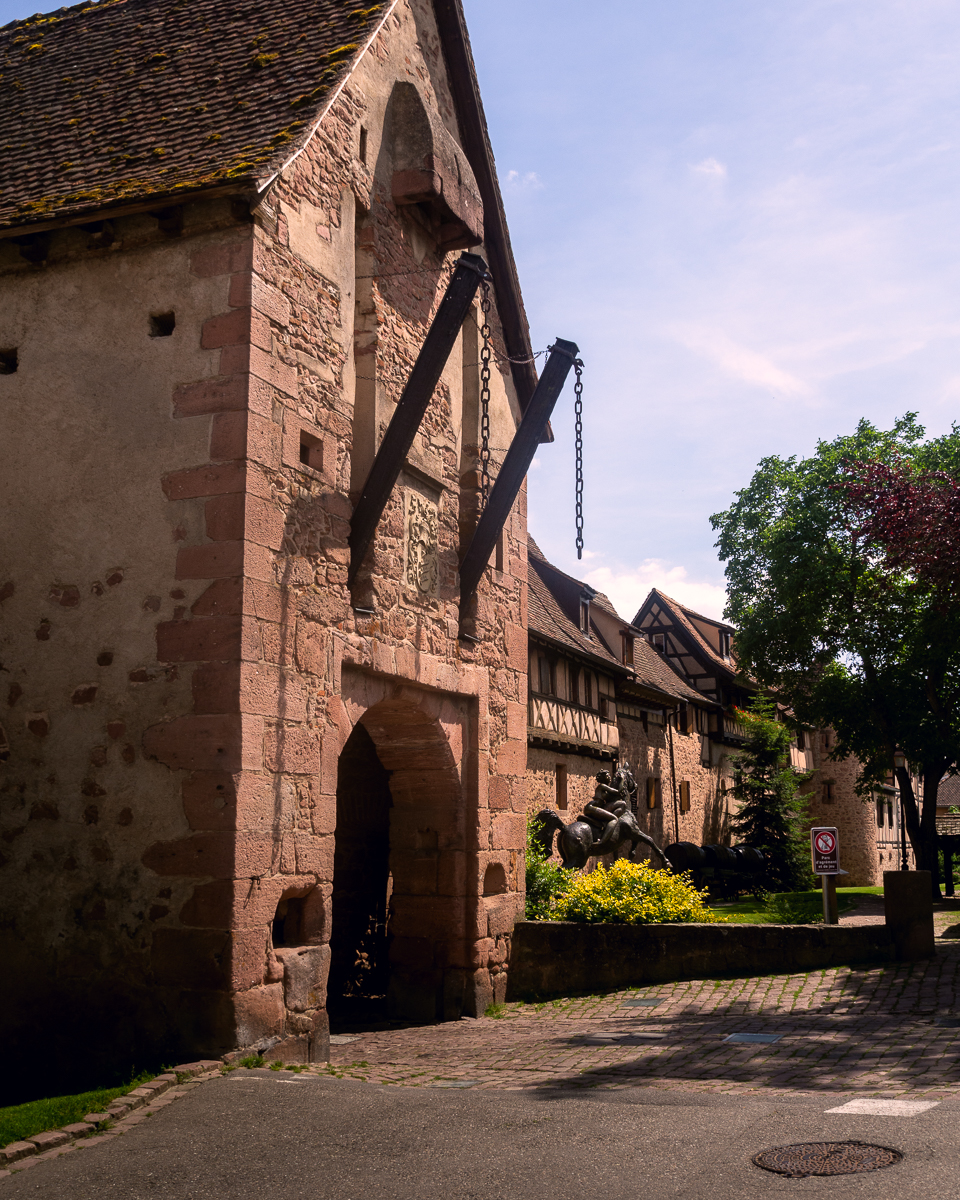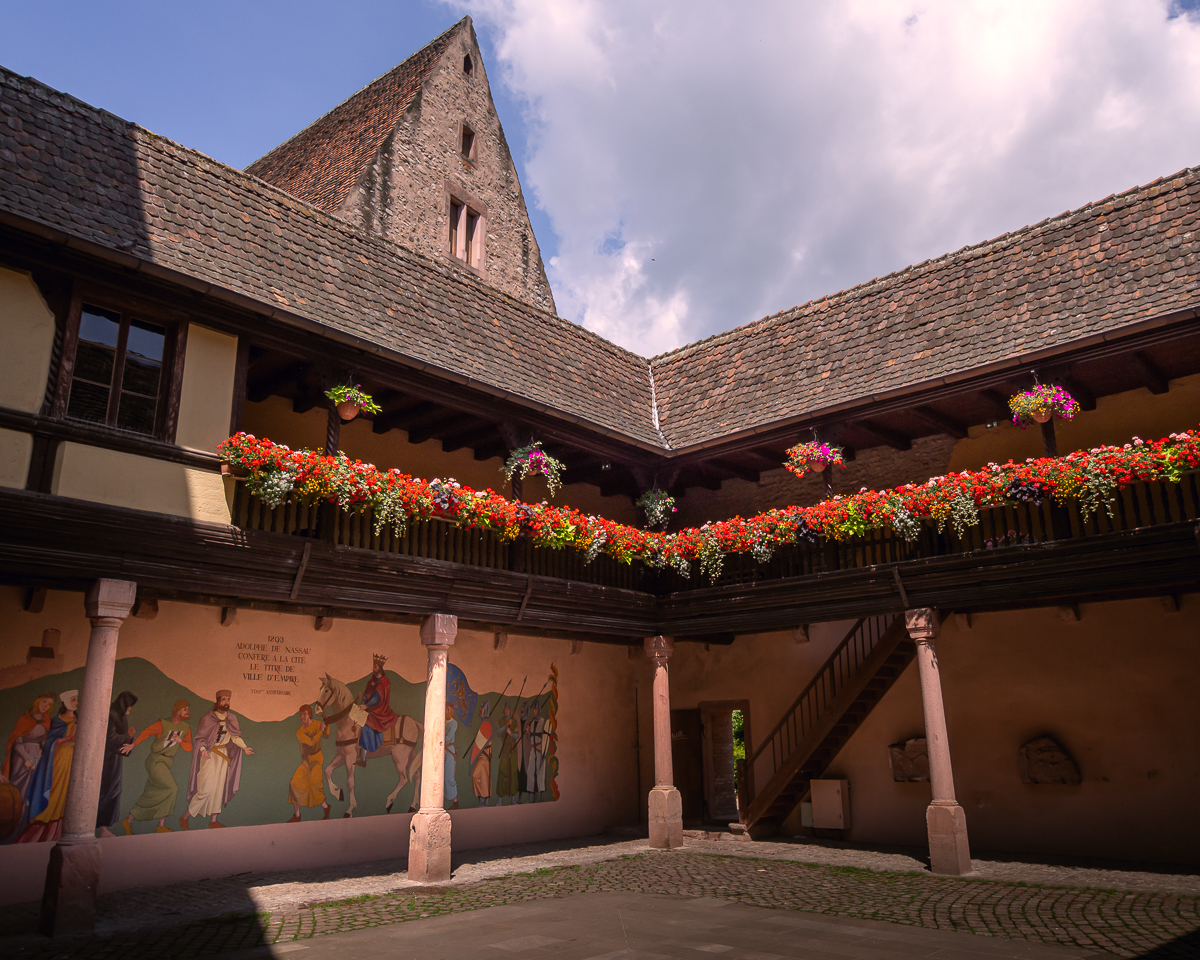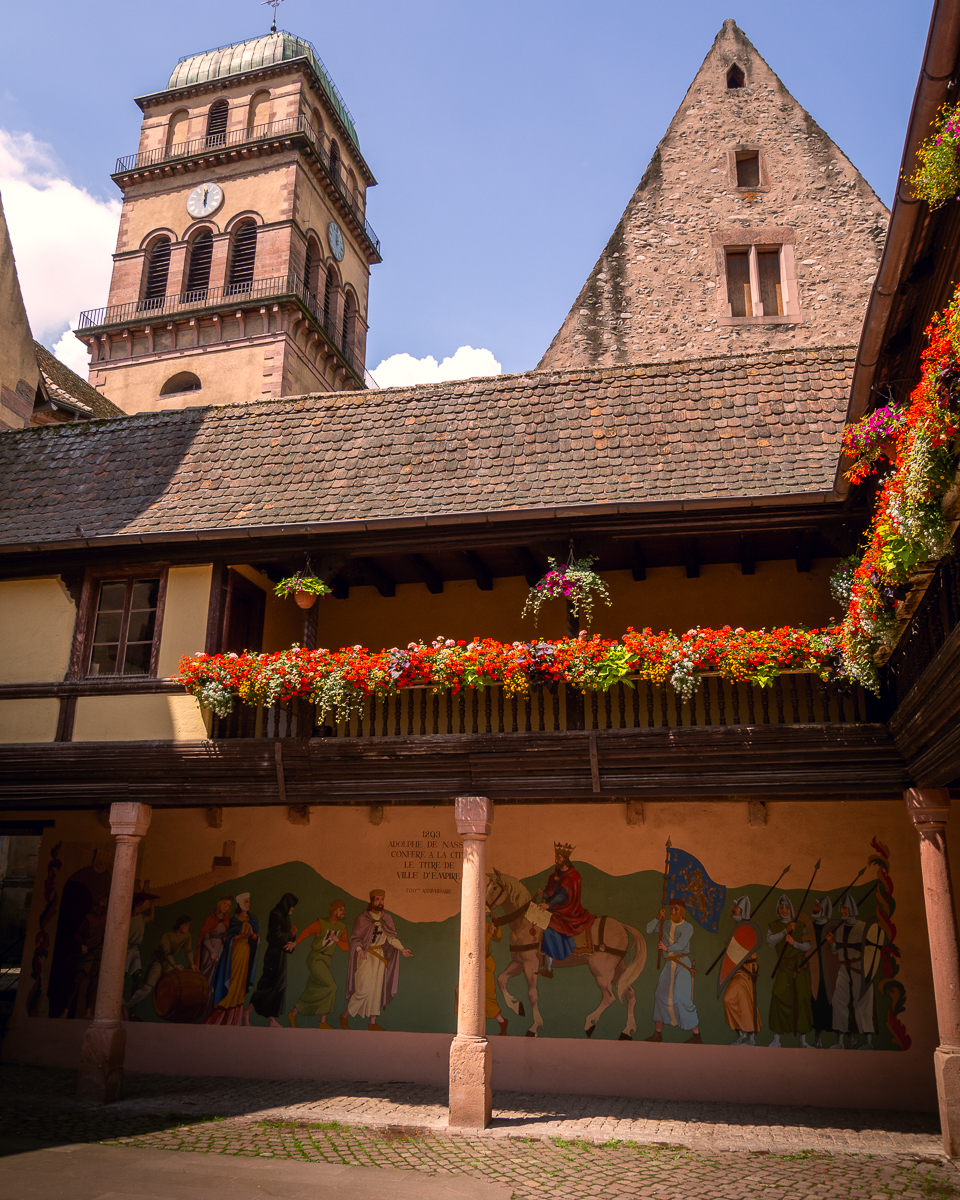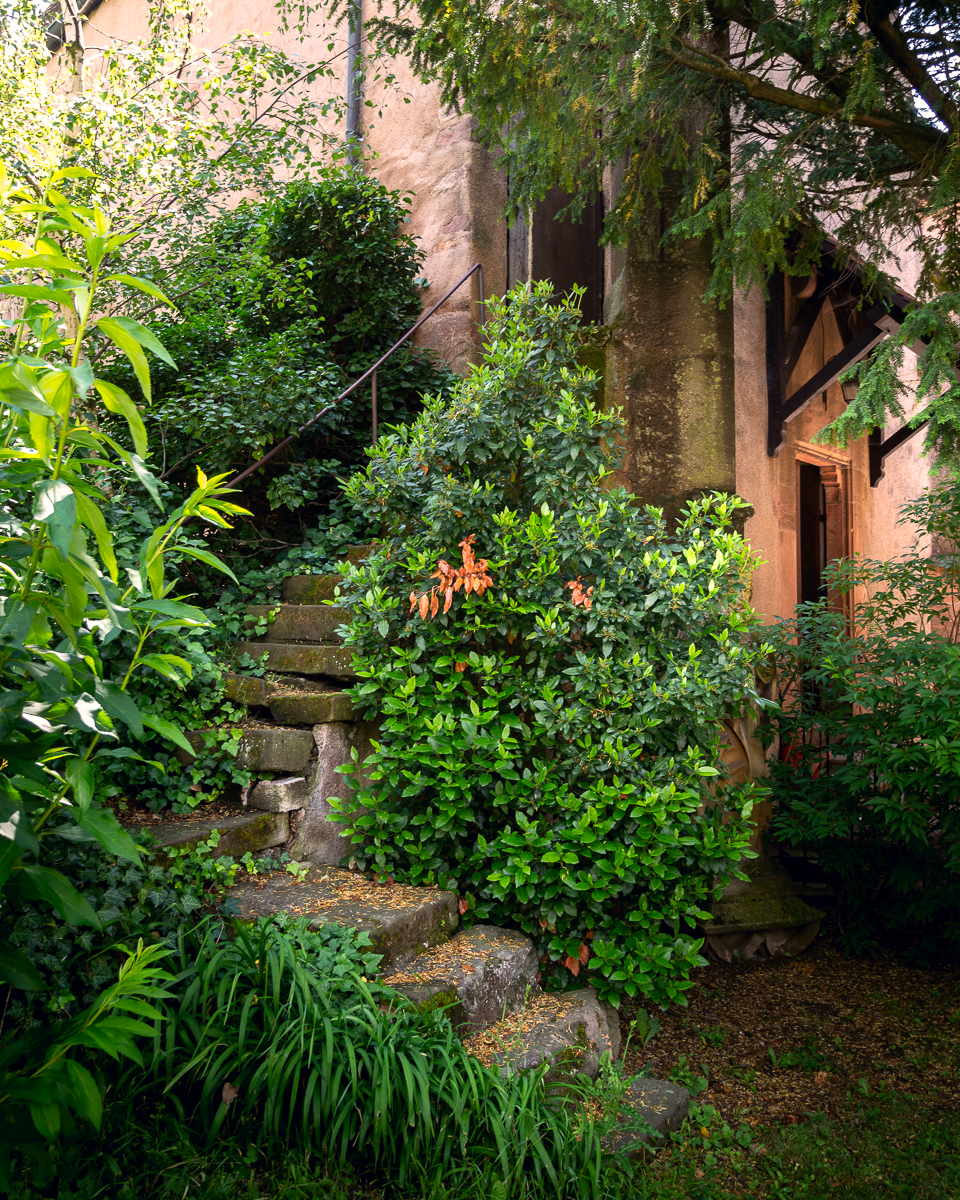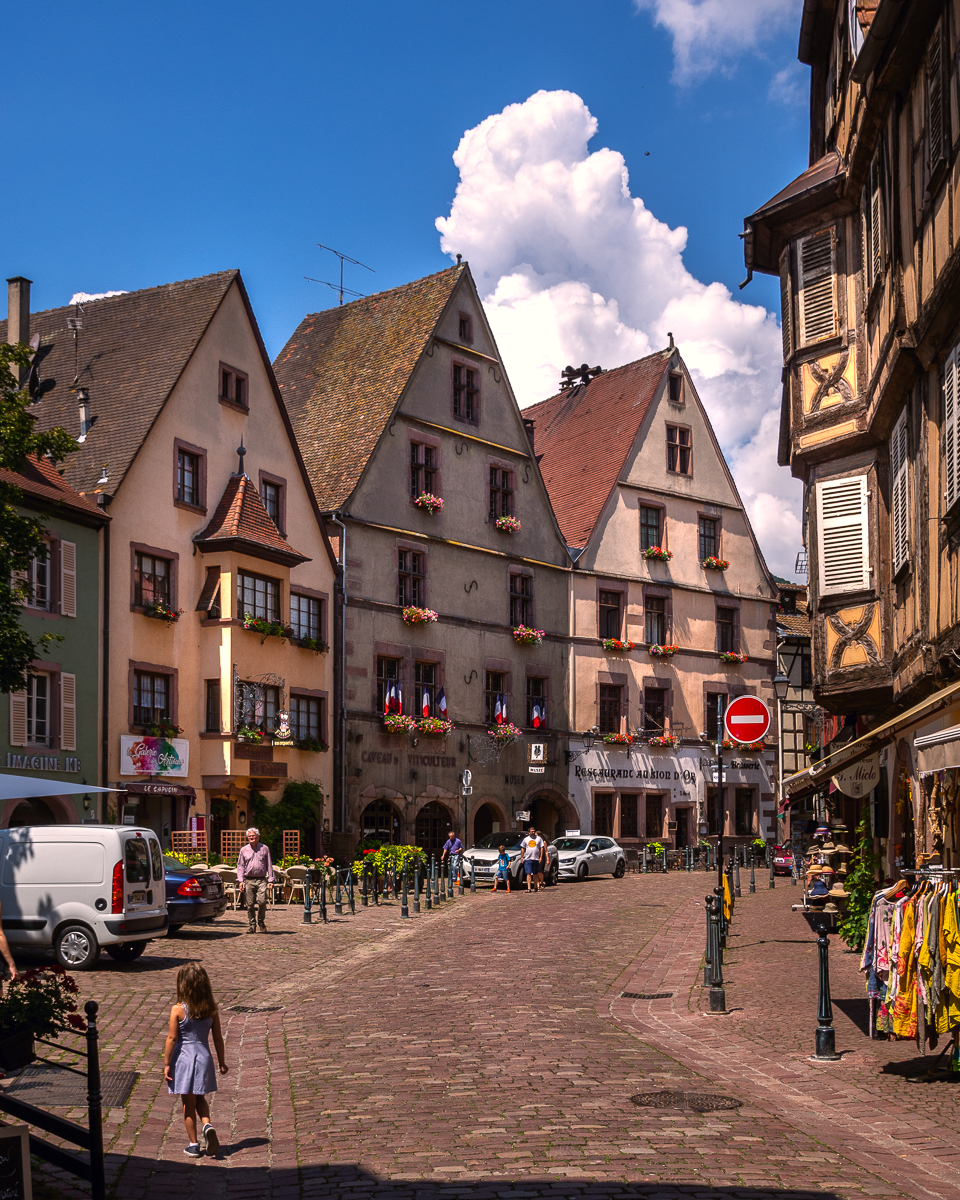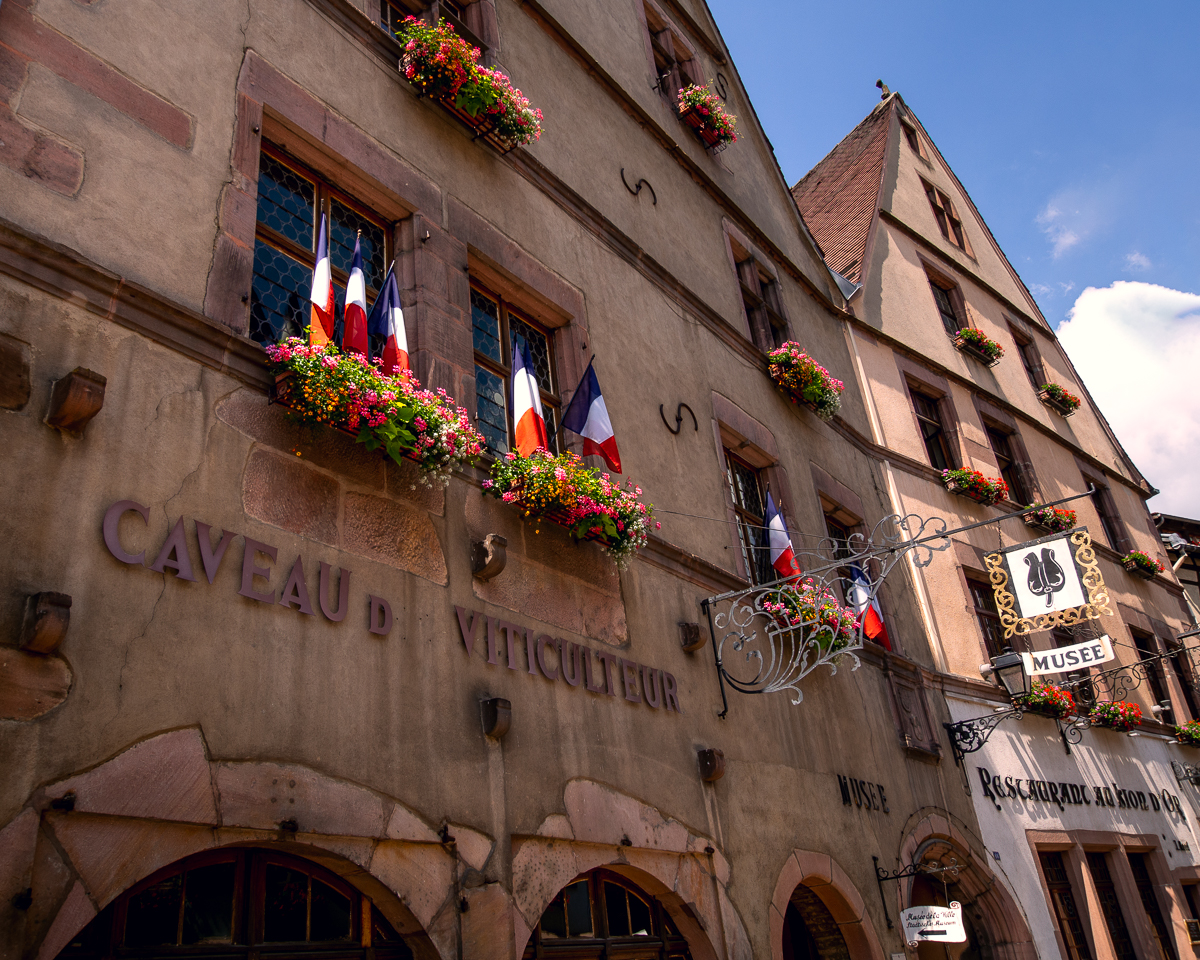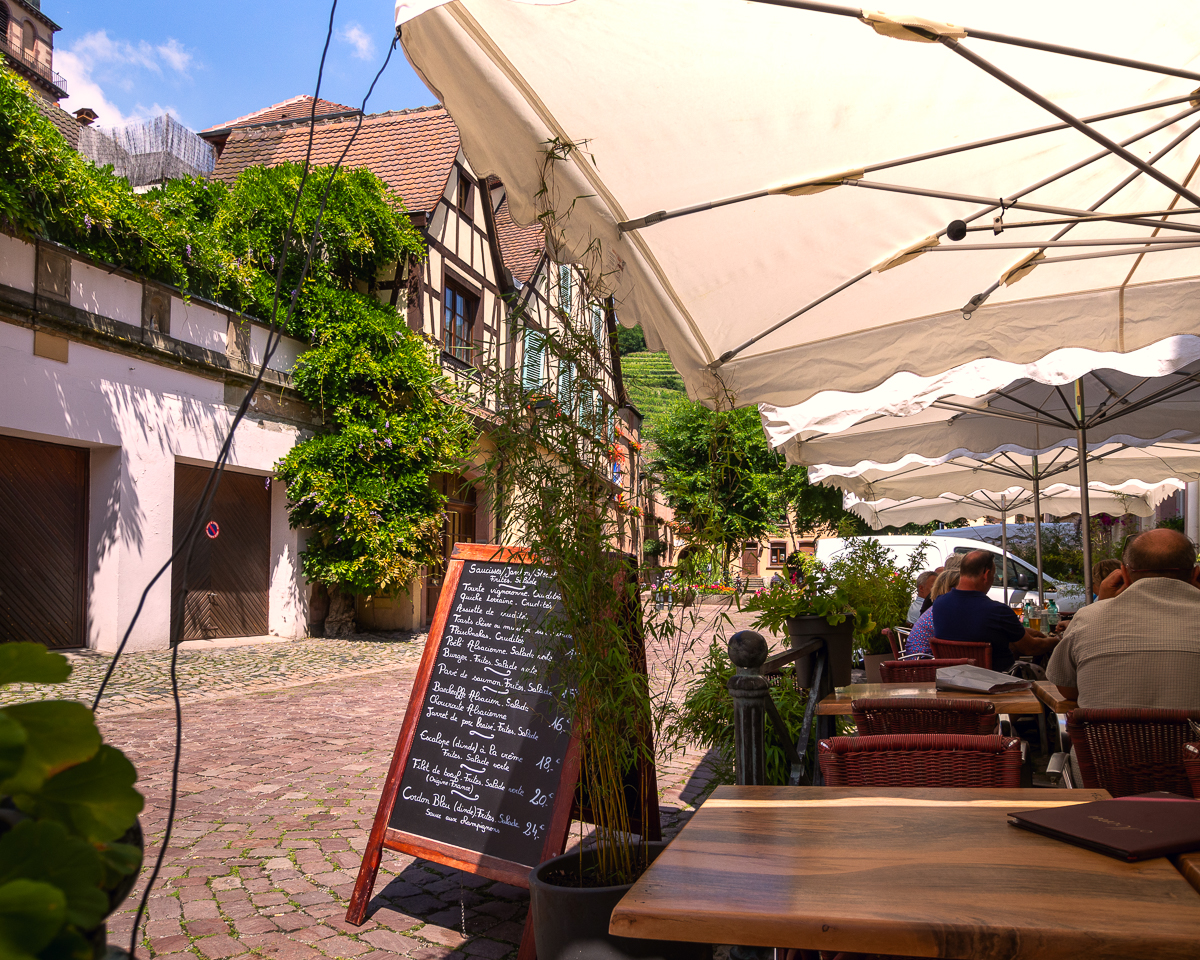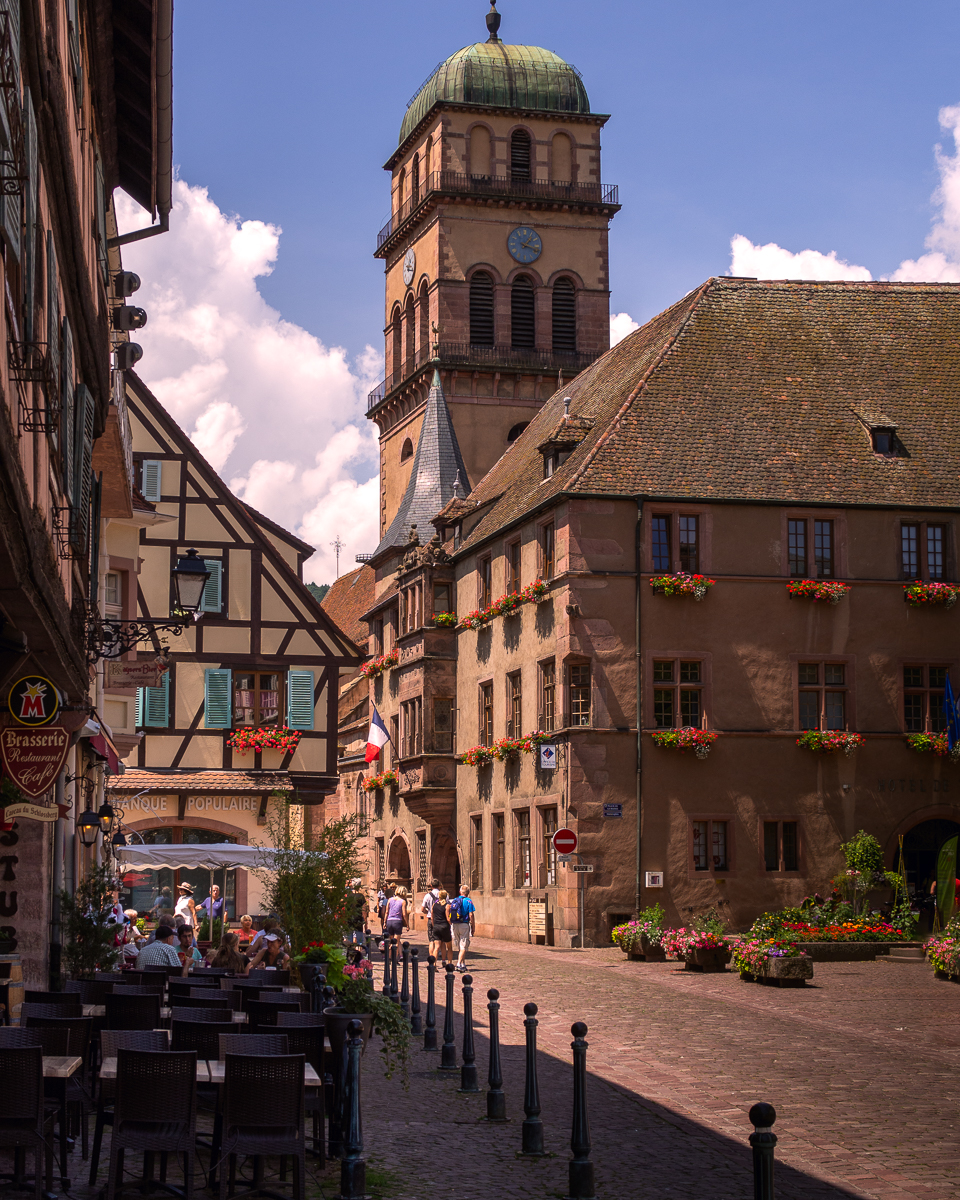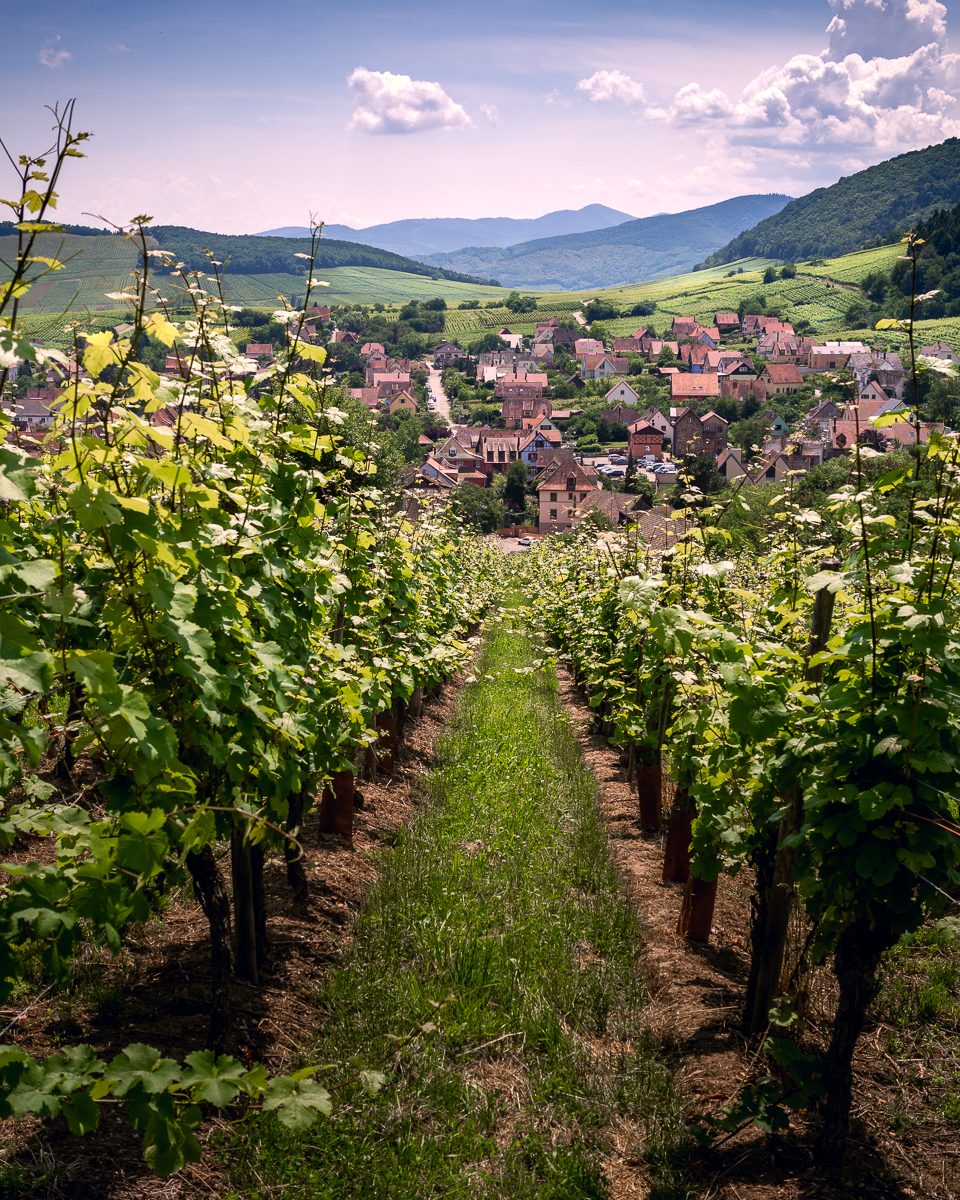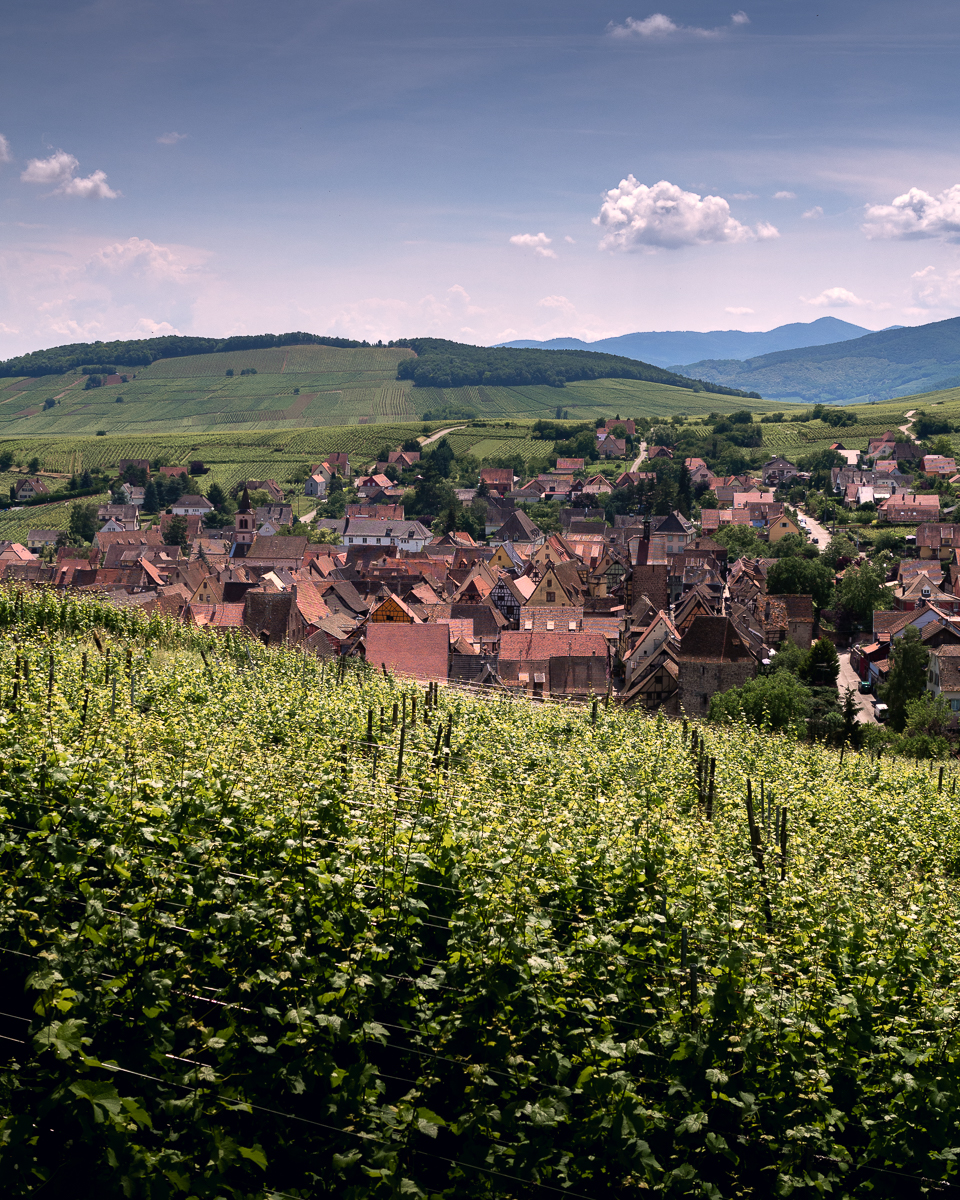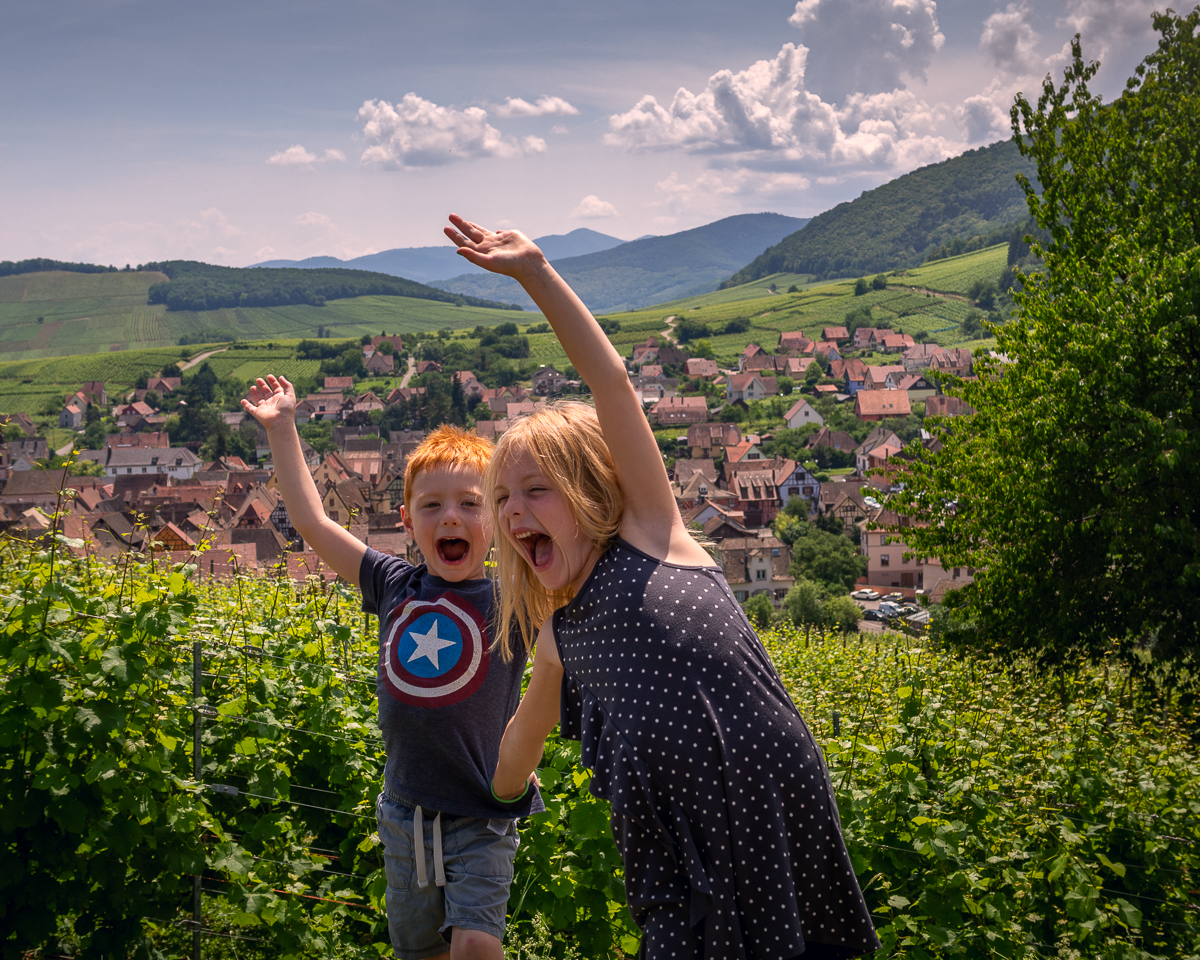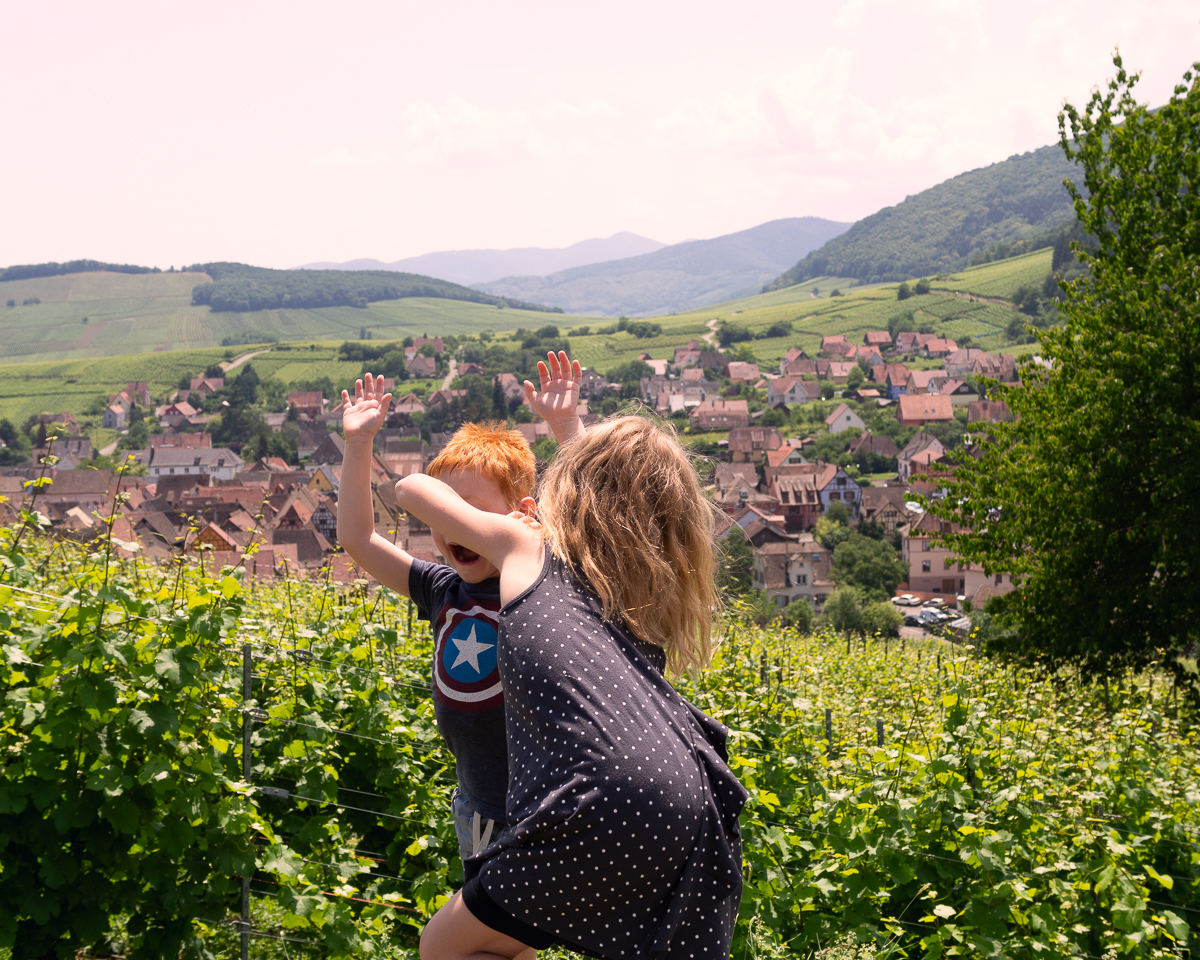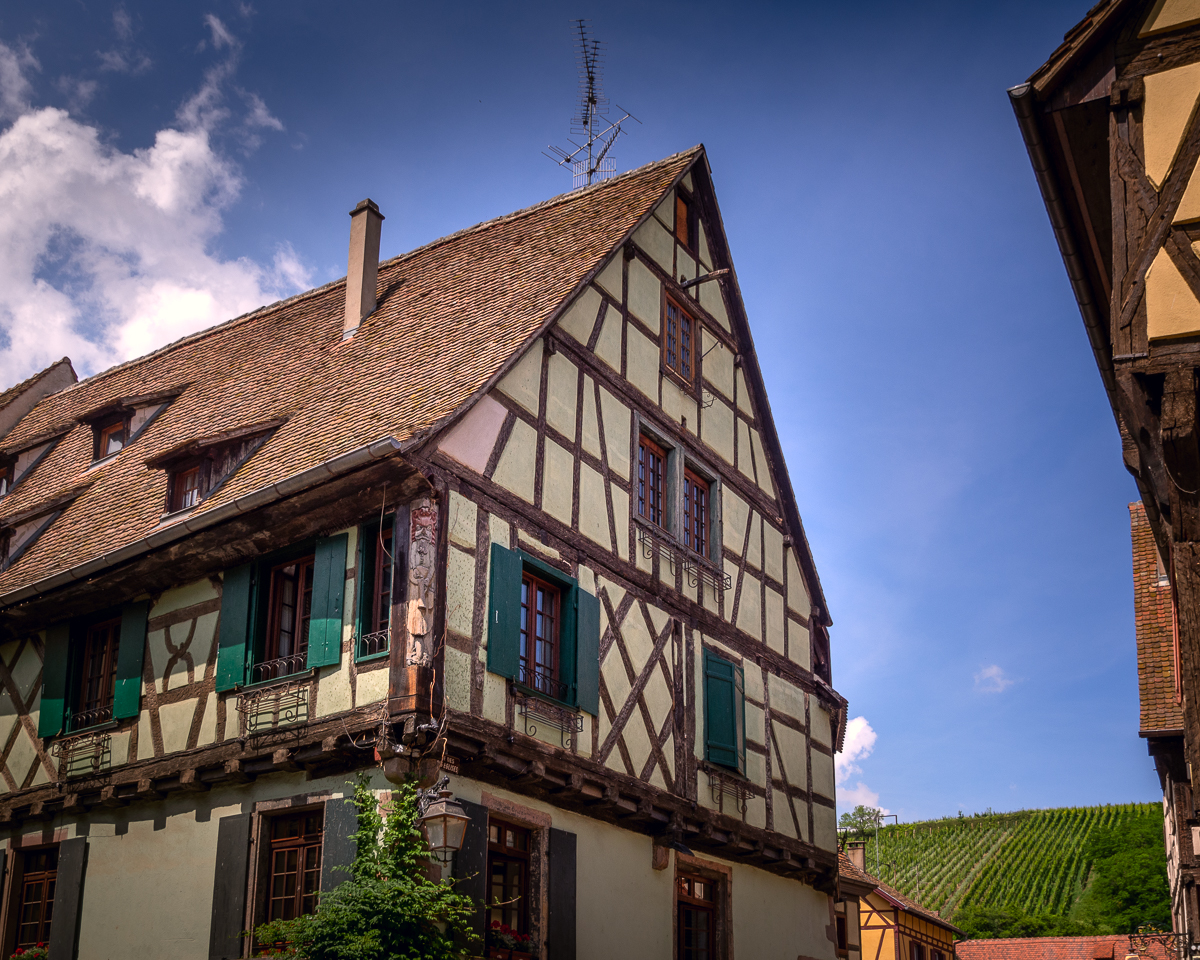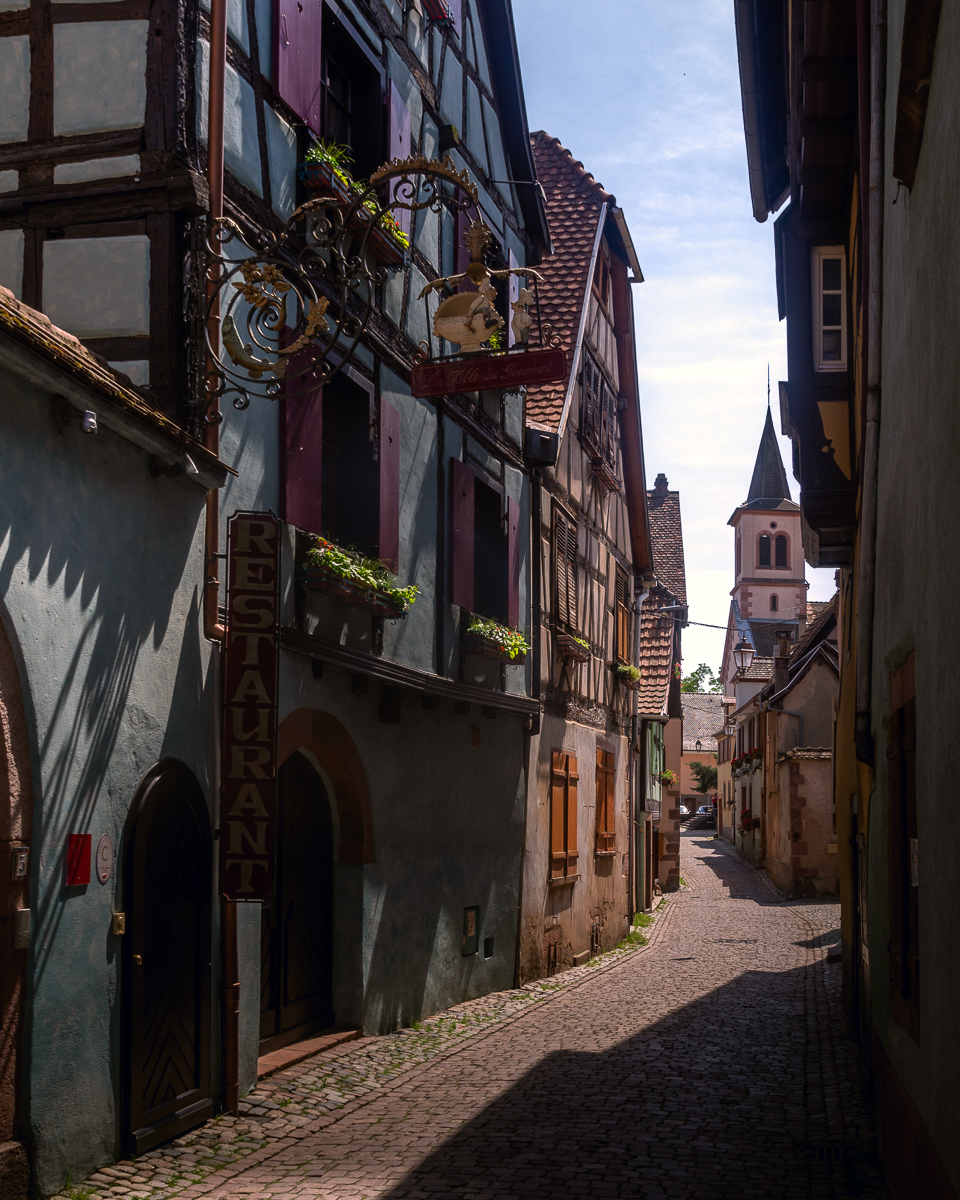
The classic convertible roadster weaved left and right on the ribbon road in front of me. The movements were mesmerizing and I couldn’t divert my gaze from it. Vineyards, whose plants grew up to the road’s edge, blurred in my periphery with the car’s movement. Row by row they pulsed and flickered. I imagined I was a trailing camera in a 1960s French film. Our protagonist’s silver hair wisping in the open air. Is he a hero or a villain on the chase? No, he’s neither. He’s a complicated character, of suspect moral integrity, and is now presented with the challenge of doing the “right thing” to resolve the underlying conflict of the film.
Northwest of Colmar, along the east ridge of the Vosges Mountains, are a string of villages, like pearls in a necklace. They make up Alsace’s medieval, wine-trading network. Prized for their charm, the collective villages are proudly referred to as the Route du Vin. No amount of preparation could educate me beyond these basic truths. I knew I would have to experience it to understand it. Whenever I’d heard “Route du Vin” uttered from the lips of those who know it, there would be a breathy reverence and longing in the tone, as if to say “Of course I know the Route du Vin. We’re old friends. We spent the summer of ‘75 backpacking through Europe.”
Leaving Colmar’s chaos behind, I pointed the car north into the procession of joy drivers with no real plan. Little villages sprinkled the panoramas with two or three visible at a time. Their Germanic names carry an air of inelegant charm like Turckheim, Ingersheim, Ammerschwihr and Niedermorschwihr. The suffixes “heim” and “wihr” signify an individual’s home, suggesting the town grew from a single farm. We parted with the roadster and pulled off when a sign read Kaysersberg. I would never know where he was going nor if he would make morally sound decisions. My film would have to remain unwritten.
Kaysersberg is nestled into a narrow pass in the base of the Vosges Mountains. Its dreamy streets wind with the contour of vine-covered mountainsides. Its picturesque, Renaissance, wood-timbered buildings line long, narrow, snaking town squares. A shell of a castle guards from above the vineyards and produces an almost Alpine mountain-town vibe. Kaysersberg is the perfect Goldilocks medium between Eguisheim and Colmar and it would be a challenge to find a lovelier municipality in France. This seemed to be validated as Kaysersberg was voted France’s favorite village just the previous year, proving its beauty is not lost to the remote forests of the Vosges. However, this adoration was not present when we arrived. There were very few visitors meandering about, and I wondered if we were simply ahead of fleets of tour buses and swarms of charm-feeders. The lack of crowds made it feel sleepy and undiscovered.
Midway, up the valley, on a central square, was a characteristic octagonal fountain topped with a statue of Emperor Constantine, a cathedral and stony gothic town hall. The bells from the church tower overhead began their scheduled noon chime, and their echoes raced across the narrow valley. We were in the courtyard of the Hôtel de Ville surrounded by wooden balconies overflowing with rainbows of waterfalling flowers and beautifully-crafted murals on soft pink walls. I grabbed my phone and started silently recording the sounds of the bells and panning across the palette of colors. The children bounced in and out of frame. Bobby launched himself from a stone step, karate chopped his arms and belted “Hi-Ya!” sound effects. With an arm outstretched, Gigi jutted the yellow petals of a freshly-picked dandelion in front of the camera and flashed a proud smile. I was surprised she was able to find it in the dutifully manicured town center, and it added a hint of humanity, proving Kaysersberg is a real living thing and not a figment of a dreamy imagination.

